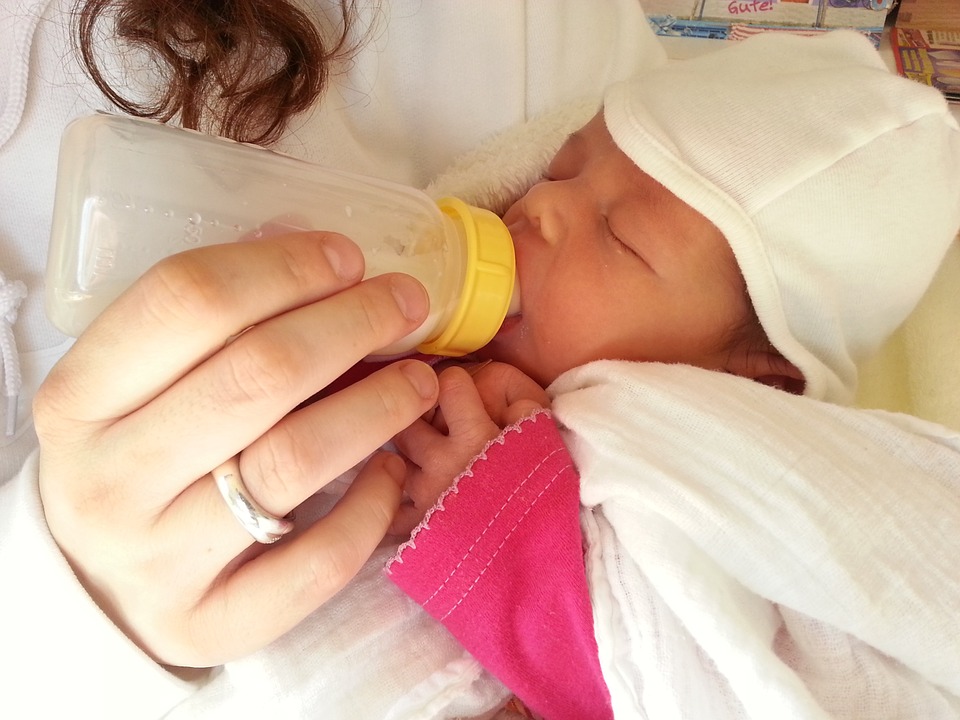
Tips on Infant Feeding
Infant Feeding
Contents
– Infant feeding: breastfeeding
– Advantages of breastfeeding: the best way to feed your baby
– Disadvantages of breastfeeding
– Infant feeding: bottle-feeding
– Advantages of bottle-feeding an infant
– Disadvantages of bottle-feeding: less convenient feeding
– Frequency of feeding an infant
– Disorders related to infant feeding
– Baby feeding: weaning
To feed your baby, you’ll have to choose between breastfeeding and bottle feeding. If each mother is free to do what she wants to feed her baby, it is still better to know these basic rules and the advantages and disadvantages of each method.
Infant feeding: breastfeeding
If you choose to breastfeed your baby, you should know that breastfeeding has many advantages for you and your baby.
Benefits of breastfeeding: the best way to feed your baby
Breastfeeding has definite advantages for your baby:
– Breast milk is the best milk for your baby.
– Breast milk contains antibodies, immune cells, and antimicrobial agents that will protect your baby from infection.
– Breastfeeding creates an indescribably strong bond between you and your baby.
– Breastfeeding is the most economical solution.
– Recent studies indicate that breastfeeding helps optimize a child’s brain development and reduces the risk of neurological problems.
– Breast milk may also spare the baby from early exposure to foreign milk proteins until the digestive system is better developed.
Disadvantages of breastfeeding an infant
Breastfeeding has some disadvantages for the mother:
– Some moms find it challenging to master the technique of breastfeeding.
– The first few weeks, breastfeeding can be more tiring for the mom. This is because a breastfed baby demands to be fed more often than if he were bottle-fed.
– The breastfeeding mother will probably have to deal with a few common problems related to breastfeedings, such as cracks on the nipple or painful engorgement of the breasts.
Tip: to relieve herself for a few hours from this very demanding and tiring breastfeeding, she can express her milk at the usual feeding time thanks to a breast pump so that a third person can give the baby the bottle.
Infant feeding: bottle-feeding
Many moms choose to bottle-feed their baby for practical reasons, but mostly to keep some freedom! However, as with breastfeeding, this form of feeding has advantages and disadvantages.
Advantages of bottle-feeding
The benefits of bottle-feeding are as follows:
– The father can establish a strong bond with his child more quickly by giving the child a bottle.
– With a bottle, you can tell exactly how much milk your baby has drunk.
– A bottle-fed baby will last longer between feedings.
– A mother who chooses to bottle-feed her baby will still have some freedom of movement but will feel less dependent on her baby.
Disadvantages of bottle-feeding: less convenient feeding

The feeding of the infant with the bottle, although practical under certain aspects, has some disadvantages not negligible as much for the parents as for baby:
– Preparing and cleaning bottles can quickly become a chore. Especially since you have to take everything with you each time you travel.
– Baby will probably have more difficulty digesting infant milk than breast milk. You will probably have to deal with repeated colic, which means crying.
– Giving infant milk in a bottle will inevitably cost more than breastfeeding. There are so many accessories to buy: bottles, milk, sterilizer, cleaning brush…
If you are unsure whether to breastfeed or bottle-feed your baby, you can always try breastfeeding for a week and then decide.
Be careful: polypropylene bottles release up to 16 million microplastics per liter and even up to 55 million when preparing a bottle with boiling water. To limit this risk, use glass bottles or rinse them 3 times with cold sterilized water after sterilization and do not put them in the microwave.
Frequency of feeding an infant
Depending on whether you choose to breastfeed or bottle-feed, the frequency of feeding will undoubtedly be different:
– For a breastfed baby: baby may ask to suckle frequently, 8 to 12 times in 24 hours. It is expected that at the beginning, feedings are frequent; this is to establish good lactation. Later on, your baby will have larger feedings, and these will naturally be spaced out.
– For bottle-fed babies: in principle, even a bottle-fed baby can also cry for food very frequently. However, you know exactly what your baby has drunk with the bottle, so you can more easily establish a regular rhythm between each feeding, generally one bottle every three hours. Before reaching 5 kg, a baby will need 6 to 8 bottles a day, or about 60 ml per bottle. A baby weighing 3.5 kg, for example, needs to drink between 420 and 525 ml of milk per day.
Infant feeding problems
It is not uncommon for babies to have digestive problems. In this case, do not hesitate to ask a pediatrician for advice.
Baby feeding: spitting up and vomiting
Many parents confuse spitting up with vomiting. However, it is natural and normal for baby to spit up a little when burping. Vomiting is much more important in terms of spit-up. These phenomena are often linked to a wrong position during the meal or after it.
Baby feeding: Gas
Gas can be more important in a bottle-fed baby than in a breastfed baby:
– If he seems self-conscious and restless after taking a bottle, check that the nipple slot is the right size. If the milk flow is insufficient, the nipple slot is too small, and the baby has to suck hard to get his milk. This means that baby is swallowing too much air while feeding.
– Also, make sure the bottle is tilted enough when baby is sucking. It would help fill the nipple and top of the bottle with milk.
If your baby is gassy, try pausing his meal and burping him.
Baby Feeding: Colic
Colic usually occurs between 3 weeks and 6 months of age. A colic attack makes your baby cry, and she folds her legs in pain. His tummy gurgles, and he sputters and gurgles.
To calm a colic attack, you can massage your baby’s tummy, give him a pacifier to suck on, and rock him. If colic is uncontrollable, don’t hesitate to consult your doctor, who can prescribe medication to calm baby.
Feeding your baby: Burping
If your baby is bothered by air bubbles in his stomach, you can help him make a burp. Lift your baby against you, with his head on your shoulder, and gently massage his back.
Weaning your baby
The WHO recommends not weaning your baby before 6 months. Why not? Because before this age, baby’s immune and digestive systems are not yet sufficiently developed.
If your baby is less than 6 months old but seems hungrier than before, it doesn’t necessarily mean he’s ready for solid food. Simply increase the amount of milk.
Hope this post helps you with infant feeding. Kindly remember to share your comments below.
You May Also Like

Top 3 Tips To Help Your Children Succeed At School (Part One)
2023-01-19
Boundless Play: A Guide to Choosing the Right Playground Fencing
2024-01-13


6 Comments
Pingback:
Pingback:
Pingback:
Pingback:
Pingback:
Pingback: